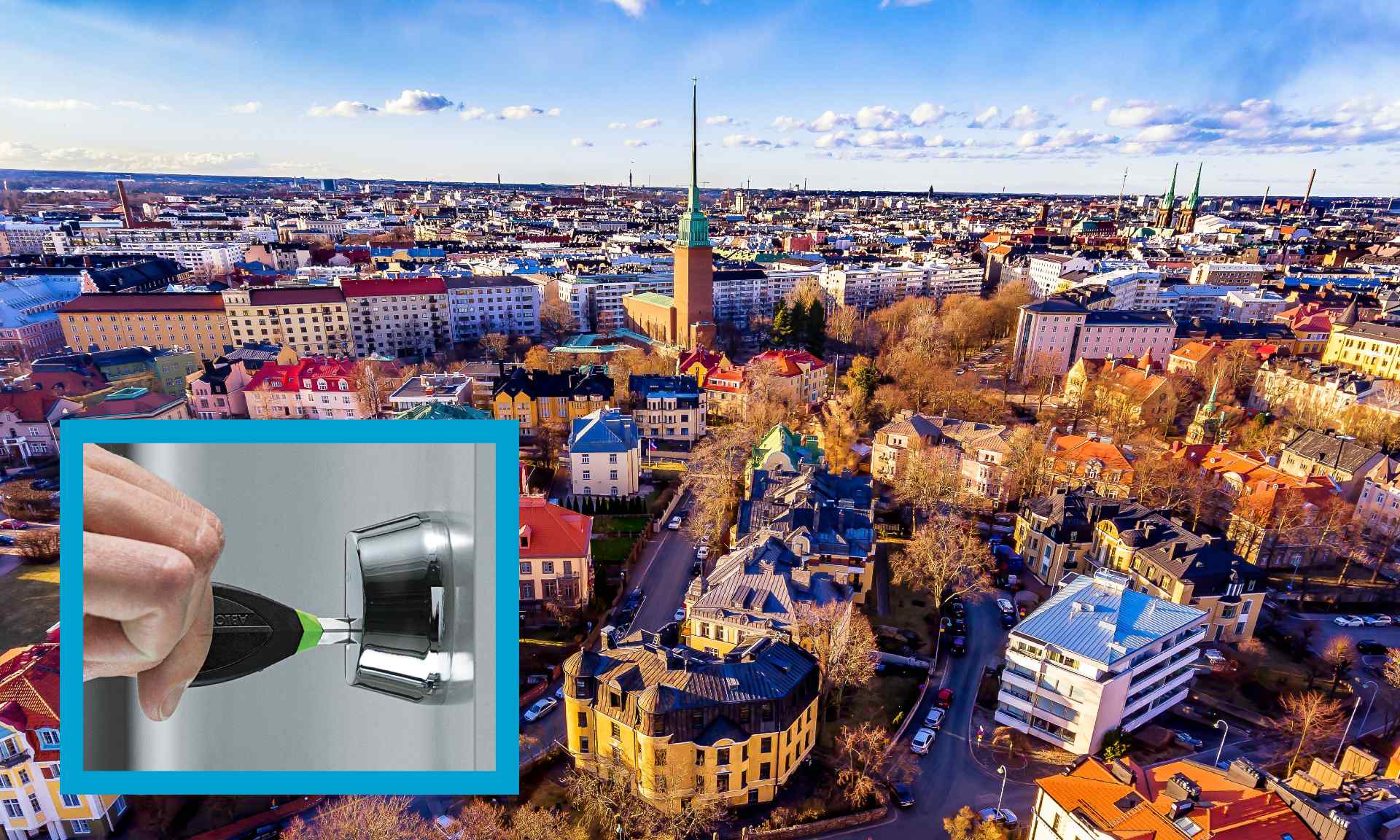When renovation is required, many multi-family housing organizations also take the opportunity to upgrade door security. Managing multiple units and regular tenancy changes with mechanical lock-and-key technology is time-consuming and inefficient. It can also create security vulnerabilities when keys are lost. An easier, electronic solution — without wires or batteries — will save management time and money.
This was the challenge faced at Metsäpurontie 20, a housing cooperative in Maunula, Helsinki. The doors at Metsäpurontie 20 had long been secured by mechanical locks and keys. However, there was no valid patent for their locking model: The copying of additional keys was not restricted or controlled. In addition, some 15 locks had been replaced over time, so serialization could not be fully utilized.
“During the plumbing renovation, there were more than ten apartments with locks not compatible with the master key. The chairman of the board of the housing cooperative had to open the doors to the workers and keep track of access,” says property manager, Raimo Rahkonen.
They needed a long-term solution which simplified secure key management.
Wire-free electronic access control powered by energy harvesting
Deciding on a digital rather than a mechanical upgrade was simple: The decisive factor in choosing PULSE locking technology from ASSA ABLOY was its ease of use for both residents and the block’s key manager.
PULSE key-based access control is self-powered: It operates without any external power source. No wires, no batteries. Opening a PULSE lock is beautifully simple. A user inserts their programmable PULSE key. The power generated by inserting and turning — energy which is usually “wasted” — is harvested to power the lock’s encrypted electronic security. If the key is authorized by the system, the lock opens.
Key handling is now straightforward for everyone. Users are issued with one PULSE key pre-programmed with all their cleared permissions, no matter how many locks they need to open. Because the key harvests energy at the door, no one needs to remember to change key batteries. It simplifies system admin for block managers and residents.
A time- and cost-saving upgrade
At Metsäpurontie 20, 36 apartment door locks were replaced, plus another 34 door locks and two padlocks across public areas. PULSE locks are easier to install than comparable electronic access systems because they require no major adjustments to a door. An installer simply switches its existing mechanical cylinder for a PULSE cylinder. It saves building owners’ time and money compared to equivalent electronic solutions.
“The new locks were compatible with the old doors. Only a small, indiscernible protective cover was needed around the hole,” explains Tero Korhonen, Project Sales Manager at Abloy, whose experience in the multi-residence sector was invaluable throughout the procurement process.
PULSE does much of the heavy lifting in daily multi-residence security management. Keys and cylinders are reusable and reprogrammable, making tenant turnover fast and cost-free. Because PULSE’s cloud-based management software logs events, incident investigation takes a few clicks. Key blacklisting is easily automated via user keys.
Housing managers never need to change locks again just because someone loses a key — another significant cost saving over the locks’ lifetime. “Previously, the doors in an entire section needed to be serialized again if a key went missing,” adds Rahkonen. “That was expensive. This happened when a resident’s handbag was stolen at the checkout in a store, for example. In the digital system, access rights can immediately be deleted for a lost key.”
With PULSE, housing cooperative residents get a door security upgrade — and the cooperative solve many of their access management headaches.



